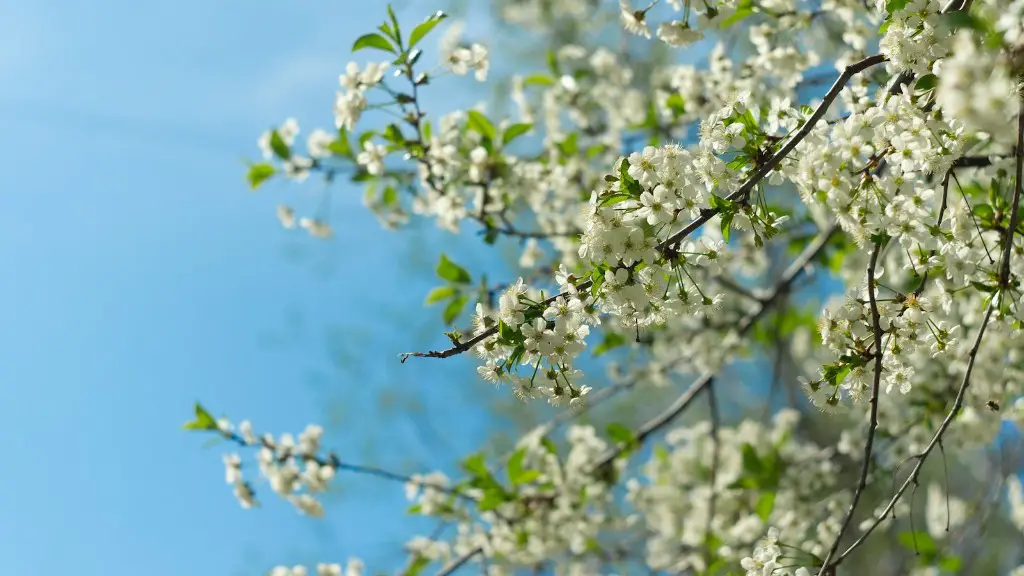Do you want to know how to plant a lemon tree in Florida? Planting a lemon tree in the right ways and climate can produce beautiful, fragrant blossoms and delicious citrus fruits. Planting a lemon tree in Florida can be surprisingly easy and rewarding if you follow proper gardening tips and techniques. Here are the essential tips for planting a lemon tree in Florida.
Preparing the Soil
Preparing the soil is a very important step when planting a lemon tree in Florida. Sandy soils with good drainage are ideal for producing healthy, juicy lemons. Avoid any soils that hold too much water, as lemon trees need lots of air in the soil. Test the pH content of the soil before planting, and if it is slightly acidic (6.5-7.5 pH range) it will be an ideal environment for a lemon tree. If not, add garden sulfur to the soil to help decrease the pH and make it suitable. Make sure the soil is well-aerated, nutrient-rich and has good drainage.
Add Fertilizer
Add a slow-release fertilizer to the soil before planting a lemon tree. This will ensure that the lemon tree has enough nutrients to develop a strong root system and to bear nutritious, juicy fruits. Organic fertilizer such as cow manure, compost, decomposed manure, and other types of mulch can all be used. Make sure to spread the fertilizer evenly, and apply it at least 4 inches away from the root zone of the tree.
Choosing a Planting Site
Lemon trees love the full, direct sunlight in Florida, so try to select a planting site that receives plenty of sunshine. Make sure that the site is well-drained and sheltered from strong winds and heavy rains. Leave enough space around the tree so that it can grow to its full potential and gain the benefits of adequate sunlight.
Digging the Hole
Dig a hole that is deep and wide enough for the root ball of the lemon tree. The hole should be about two to three times wider than the root ball and about as deep. To ensure proper drainage, place broken bricks in the bottom of the hole and also mix in about two inches of organic material, such as compost or soil amendments. Then, fill the hole with the amended soil and pat it down firmly.
Planting the Tree
Set the lemon tree in the hole and backfill with the amended soil. Make sure the depth of the tree remains the same as when it was in the original nursery pot. Add more soil if necessary and make sure the root ball is firmly secured in the soil. Water the soil mixture slowly and deeply to help the roots settle in. Once the ground has been sufficiently watered, cover the area with a thick layer of organic mulch to reduce weed growth and help retain moisture.
Watering and Pruning
Give the lemon tree plenty of water during the first few weeks after planting. The soil should remain moist, but not soggy. Prune the tree to facilitate good airflow and to maintain an attractive shape. Cut off any dead, diseased, or broken branches, and thin out the canopy to allow more light and air to flow through the tree. With the right care and attention, a lemon tree planted in Florida can provide you with juicy lemons for years to come.
Harvesting Your Lemons
Lemon trees generally start producing fruit about two or three years after planting. To determine when the lemons are ripe, gently tug on the fruit and look for blemish-free lemons with fragrant blooms. If the fruit is yellow, then it is ripe and ready to be harvested. Harvest the fruit carefully with lopping shears, but leave the stem attached to the tree. Lemons can be stored fresh in the refrigerator or used immediately after harvesting.
Provide Good Maintenance
To ensure vibrant, healthy growth in your lemon tree, it’s important to provide it with good maintenance. During the growing season, be sure to water the tree deeply and regularly, and apply a balanced fertilizer once a month. Prune the branches occasionally to promote good airflow and help maintain an attractive shape. Additionally, citrus trees are prone to insects and diseases, so regular pesticide applications may be necessary to prevent any infestations or diseases.
Protect Against Frost and Cold Damage
Lemon trees in Florida can tolerate warm temperatures, but they are vulnerable to deep freezes or frosts. To protect the tree from cold damage, add a thick layer of mulch around the base of the tree, and wrap it in frost-protection fabric during cold spells. A canopy or shade cloth can also be used to help protect the tree from cold winds and frost. Additionally, make sure to move young trees indoors during extreme temperatures.
Prevent Common Pests & Diseases
Common pests and diseases can affect lemon trees in Florida, so it’s important to stay vigilant and take the proper preventative measures. Regularly examine your tree to look out for any signs of disease or pest infestations. Remove any diseased or dead branches, and spray the tree with an appropriate pesticide in order to keep away any unwanted visitors. Additionally, keep the surrounding area weed-free to prevent pests and also to allow air and sunshine to reach the tree.
Harvest Regularly & Correctly
Lemons should be harvested regularly in order to encourage continuous fruiting. To harvest, use lopping shears to cut the fruit from the tree, but leave the stem attached if possible. Keep an eye out for any blemishes or spots on the lemons, as these can indicate an infection or disease. After harvesting, store the lemons in the refrigerator for up to two months or until you are ready to use them.


